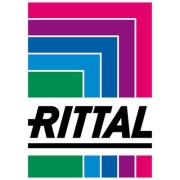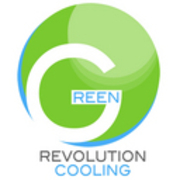Data Center Cooling Systems are essential for maintaining optimal operating temperatures in data centers, ensuring that IT infrastructure runs efficiently and reliably. These systems help prevent overheating, reduce downtime, and enhance overall performance.
The top 5 Data Center Cooling System solutions are Liebert Cooling, STULZ Cooling, Schneider Electric-APC Data Center Cooling System, Rittal Data Center Cooling System and Coolcentric Data Center Cooling System, as ranked by PeerSpot users in September 2025. Liebert Cooling received the highest rating of 0.0 among the leaders, is the most popular solution in terms of searches by peers, and holds the largest mind share of 27.3%.
Data Center Cooling Systems use a variety of technologies to manage the temperature and humidity levels within data facilities. Effective cooling is crucial for preventing equipment failures and maintaining service continuity. Many data centers use a combination of cooling methods, such as liquid cooling, air cooling, and free cooling, to achieve the best results.
What are the critical features of Data Center Cooling Systems?
What benefits or ROI should users look for?
In industries such as finance, telecommunications, healthcare, and cloud computing, implementing effective Data Center Cooling Systems is essential for sustaining high performance and ensuring that sensitive data and applications remain secure and accessible. These systems are tailored to meet the specific regulatory and operational requirements of each industry.
Data Center Cooling Systems help organizations avoid costly downtimes and ensure that their critical infrastructure is always running smoothly, which is essential to maintaining service quality and customer satisfaction.
| Product | Market Share (%) |
|---|---|
| Liebert Cooling | 27.3% |
| STULZ Cooling | 26.6% |
| Schneider Electric-APC Data Center Cooling System | 19.3% |
| Other | 26.799999999999997% |







Cooling is necessary in a data center because without it, your entire organization’s ITE is at risk. Safe temperatures must be maintained for servers. Because data centers are vital for storing information, it would be a detrimental loss to a company if their data center were to become compromised or damaged. Without proper data center cooling, servers can overheat and fail. And because servers are in use constantly, heat is always being generated.
A cooling system works by removing heat from the vicinity of the ITE’s electrical components to avoid overheating problems. When a server gets overheated, onboard logic usually turns it off to prevent damaging the server. In the case that the server gets too hot, it could negatively affect its lifespan. Data center cooling systems use cooling techniques made up of a combination of raised floors and computer room air conditioner (otherwise known as CRAC) or computer room air handlers (CRAH) infrastructure.
Below the raised floor, either the CRAC or the CRAH units work to pressurize the space, pushing cold air through perforated tiles and then into the server intakes. The cold air is then passed over the server components, is vented out in the form of hot exhaust, and then directed back to the CRAC or CRAH unit for cooling without mixing with the hot air. Usually, the return temperature of the unit is set as the main control point for the data floor environment. To maintain ideal and efficient operating conditions, data centers use a variety of innovative and modern data center cooling technologies.
The recommended temperature for server inlets (which is the air drawn in to cool interior components) is between 18 and 27 degrees Celsius, with the humidity range between 20 and 80 percent (according to the American Society of Heating, Refrigerating, and Air Conditioning Engineers). Take note, though, this is not the suggested temperature for the entire server room but is just the recommendation for the server inlets.
Some companies run on a model of “expected failure” if they are a large enterprise and have hyperscale data centers, anticipating that servers will fail on a somewhat regular basis. Thus, they prepare ahead of time by putting software backups in place to route around equipment if it fails. In fact, to replace failed servers more often than normal can actually be less expensive than the cost associated with operating a hyperscale facility at lower temperature levels. This is not usually the case for smaller companies, though.
Below are some of the most common cooling methods used in a data center:
When it comes to controlling data center cooling and keeping it as efficient as possible, it is important to avoid making these common mistakes:
Efficient cooling systems for Data Centers include liquid cooling, direct-to-chip cooling, and immersion cooling. Liquid cooling uses coolant to remove heat more effectively than air-based systems. Direct-to-chip cooling circulates liquid directly on high-heat components. Immersion cooling involves submerging servers in a thermally conductive dielectric fluid. These systems provide superior thermal management, reduced energy consumption, and support higher server densities.
How do you measure PUE in Data Centers?Power Usage Effectiveness (PUE) measures Data Center efficiency by comparing total facility energy to IT equipment energy. To calculate PUE, divide the total energy consumed by the Data Center by the energy consumed by IT equipment. A lower PUE indicates greater efficiency. Regular PUE monitoring helps identify inefficiencies, guiding improvements in cooling systems and energy management practices.
What role does airflow management play in Data Center cooling?Airflow management is crucial for optimizing Data Center cooling. Proper airflow management involves controlling the path of cold air to IT equipment and hot air away. Techniques like hot aisle/cold aisle containment, blanking panels, and raised floor systems improve cooling efficiency. Effective airflow management reduces energy consumption, prevents hotspots, and enhances the overall performance and lifespan of IT equipment.
Why is liquid cooling becoming more popular in Data Centers?Liquid cooling is gaining popularity due to its high efficiency, scalability, and ability to handle high-density computing environments. It provides better heat dissipation compared to traditional air cooling and supports increased server densities. Liquid cooling systems also offer lower energy consumption, reduced cooling costs, and improved environmental sustainability. The advancements in liquid cooling technologies have made them a viable solution for modern Data Centers.
How can you optimize cooling in legacy Data Centers?Optimizing cooling in legacy Data Centers involves several strategies. Implementing airflow management techniques like hot aisle/cold aisle containment and using blanking panels can enhance efficiency. Retrofitting existing systems with energy-efficient cooling technologies like variable-speed fans and liquid cooling can significantly reduce energy consumption. Regular maintenance, monitoring cooling performance, and upgrading outdated equipment are essential steps to improve the cooling efficiency of legacy Data Centers.